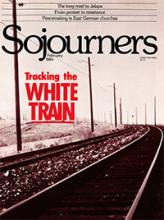When did we first see the White Train? Some of us feel we saw it first in Franz Jagerstatter's dream.
Read the Full Article

Already a subscriber? Login

When did we first see the White Train? Some of us feel we saw it first in Franz Jagerstatter's dream.
